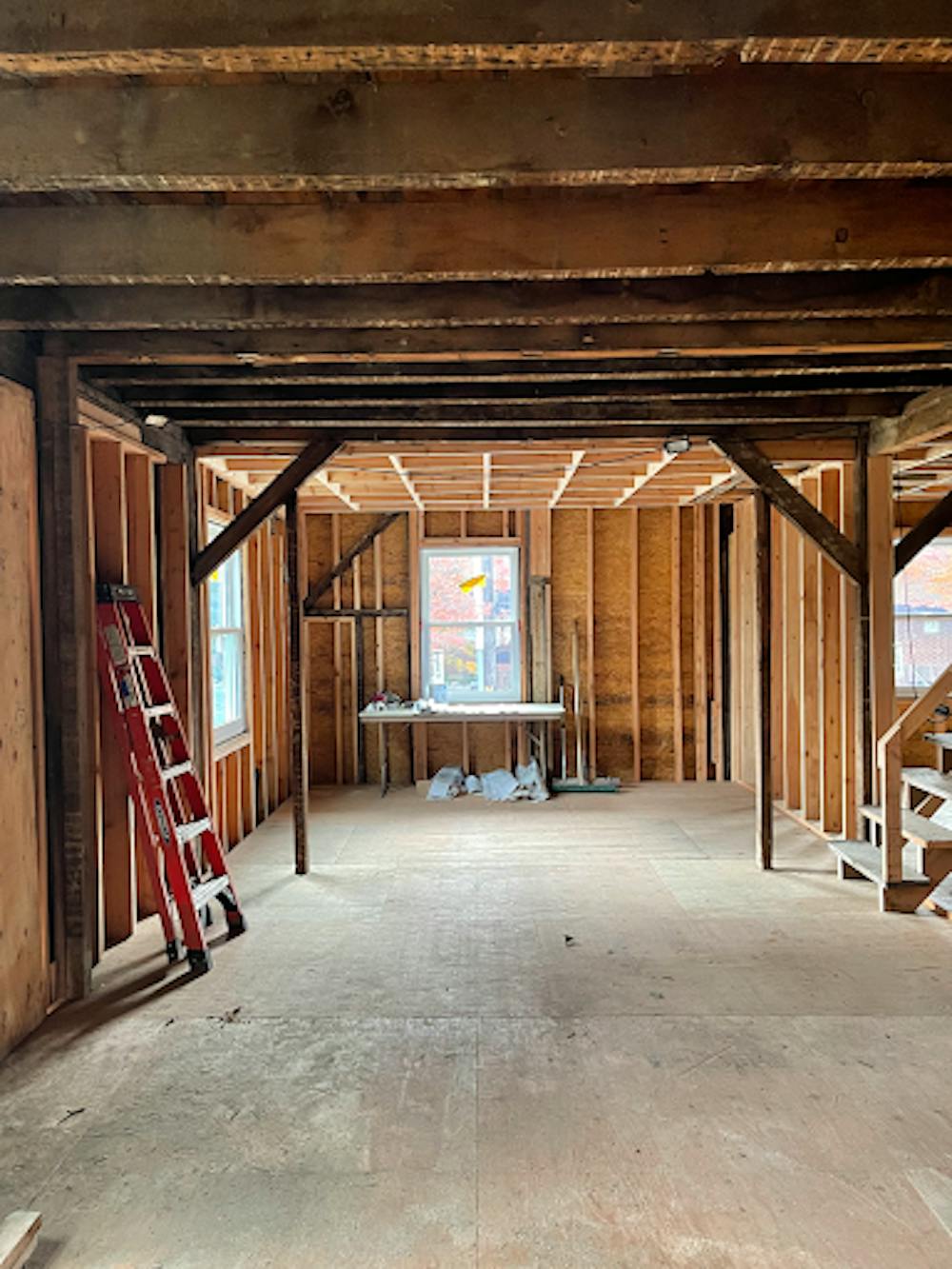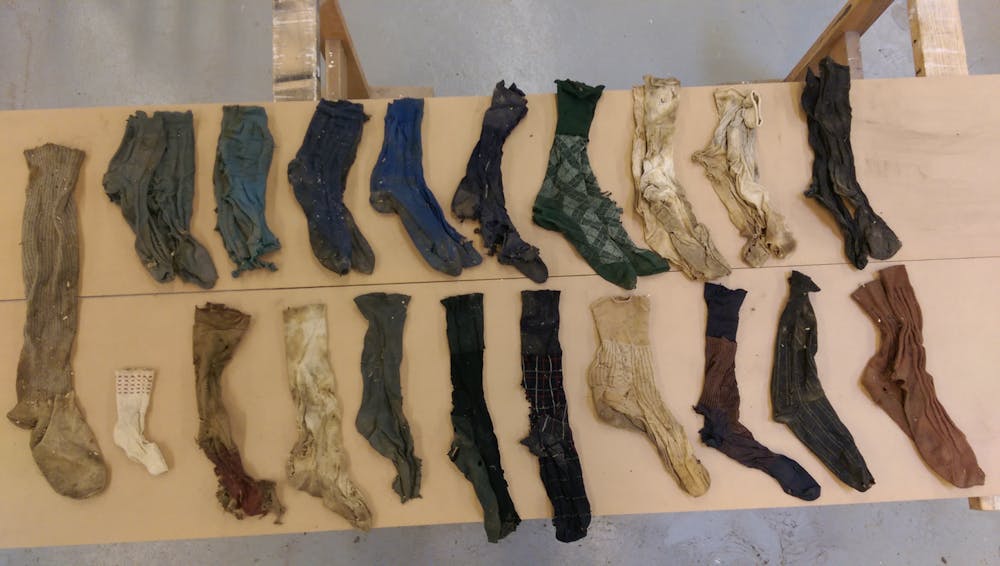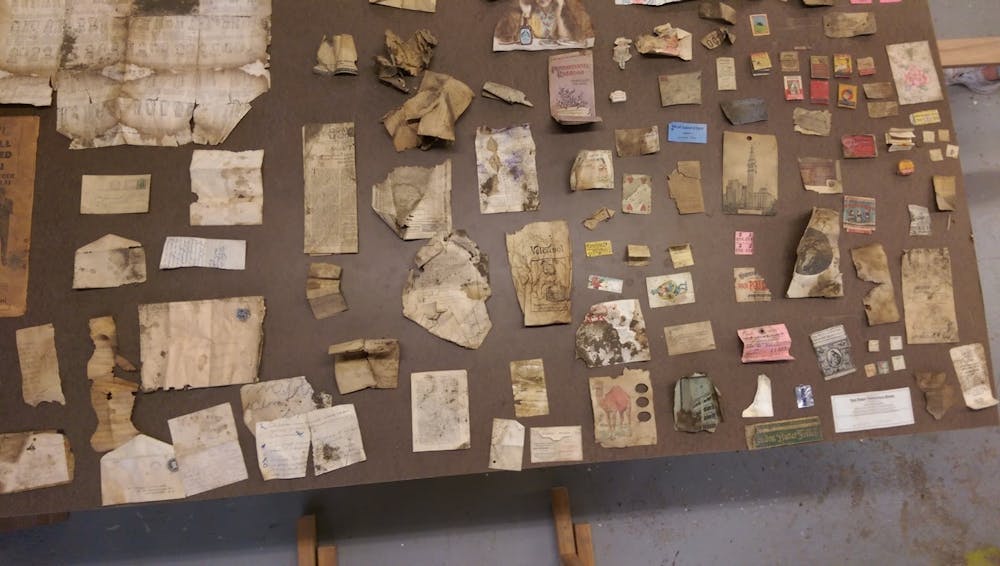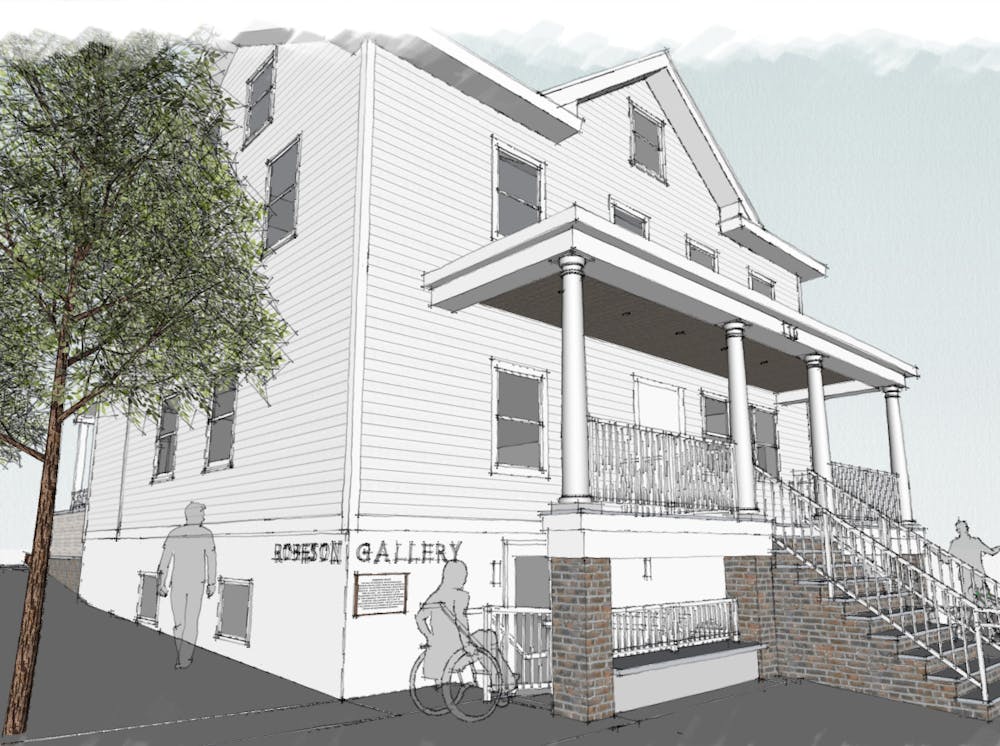Before it was officially denoted the Paul Robeson House, the property at the corner of Witherspoon and Green Street was everything from a grocery store to a private residence to a rooming house. Notably, it was the home where Paul Robeson, famed athlete, artist, performer, and activist, was born. While the House’s purpose has evolved over the past two centuries, each new version has stood as a source of refuge, amity, and culture for Princeton’s African American community. Today, the House is undergoing a new change as members of the very area it serves rally together to preserve its history and mission.
Shirley Satterfield, local historian of Princeton’s African American community and Board Member of the Paul Robeson House, told of its origins in a segregated Princeton.
“The house was owned by Isaac Stockton, and before it was a house, it was a grocery store,” she said. “But it could’ve been a house and grocery store because in some of the homes there were barber shops, there were beauty parlors, there were stores, because [African American residents of Princeton] were not allowed to shop on Nassau Street.”
One such small business owner, Anthony Simmons, later purchased the House from Stockton. Satterfield explained that, following his death in 1868, Simmons left the property to Witherspoon Street Presbyterian Church to be used to house the Church’s Minister. Almost 20 years later, in 1887, this position would be filled by a new pastor in town: Reverend William Drew Robeson.
In 1898, the House served a new function as the site of Paul Robeson’s birth to Reverend Robeson and his wife, Maria Bustill Robeson. According to Ben Colbert, Board President of the Paul Robeson House, Paul Robeson and his family lived in the House until Reverend Robeson was “forced to leave the church and move to a smaller house in the neighborhood.” Eventually, the family moved away from the Princeton area to Somerville.
Colbert explained that it was there in Somerville and later at Rutgers that Robeson “became a student” — the first occupation of many in a long and diverse career. His time at Rutgers saw successes both academic and athletic. According to the Paul Robeson Centennial Committee at Rutgers University, before graduating as the Class of 1919 valedictorian, Robeson was twice named to the All-American Football Team.
After college, Robeson took many detours before his entry into the entertainment industry.
“He was a lawyer first,” Satterfield noted, “and because of the prejudice of his secretary he decided, ‘I’m not going to be a lawyer’, and that’s when he went into singing and acting and became an activist.”

“Paul is not as familiar to most of our contemporaries because he was very active in the 30s and 40s,” said Colbert. It was during these years that his theatrical career flourished, marked by famous performances like his rendition of “Ol’ Man River” in “Showboat” and his starring role in “Othello” in London.
In later years, Robeson transitioned from the role of international performer to that of international activist. Following a visit to the Soviet Union in 1934, he praised the Soviet Constitution for effectively prohibiting racial discrimination, famously stating, “Here … for the first time in my life … I walk in full human dignity.”
At home in the United States, Robeson advocated for civil rights and labor rights, working with President Truman to push for anti-lynching legislation. Ultimately, Robeson’s progressive activism forced him out of the theatrical spotlight, as suspicions of Communist sympathies intensified the scrutiny he received from both the public and the government.
Most important to the Paul Robeson House Board, Colbert emphasized, is “the commitment [Robeson] made to equity and equal rights especially for the poor and underserved people all over.”

As Robeson’s career blossomed and evolved, his birth home too underwent changes. After the Robeson family moved out of the home to Somerville in 1901, it became a rooming house and served this function for the rest of the 20th century.
“In its early years when the first African American students were admitted to the [Princeton Theological Seminary], for instance, they had no place to stay and they had no place to eat,” Colbert said. “So the rooming house served that capacity for many years.”
According to Colbert, even after the first Black students were admitted to the University, the students would still sometimes opt to reside in the House, known then as the “Taylor House,” rather than on campus.
The informal name of the “Taylor House” comes from Ms. Gladyss Taylor, the final owner of the property before its reacquisition by the Witherspoon Presbyterian Church in 2005. Satterfield reflected on how the Church acted on the opportunity to save what she called a “noted establishment.”
“We deliberated as to how to do that because [Ms. Taylor] was bombarded by realtors in Princeton to sell the house,” recalled Satterfield. “So we were trying to figure out how we would approach her. Two of us who were on the committee at that time, Bernadine Hines and myself, were the two who grew up in Princeton. We were asked to talk to Ms. Taylor about the importance of leaving that house to the Church, and that's what we did. It was successful and she willed the house to our Church.”
Thus marked the beginning of the effort to save and preserve the Paul Robeson House, using the space to commemorate the prolific figure for whom it is named.
According to Satterfield, the initiative has only grown with time.
“We started with a small committee, and it grew larger as we saw the importance of having people on the committee who knew about the strategy of renovating the house. So we were looking for an architect.”
Kevin Wilkes ’83, local architect and founder of Princeton Design Guild, was who they chose.
Wilkes described how he first learned of the Robeson House after moving to an apartment in the neighborhood in the early 2000s.
“I knew some of the people from my community who were involved in it,” he said. “So I went up to one of them and said, ‘If you need any help with the architecture, I’d be happy to help,’ and he said, ‘Yes.’”

The main floor of The Paul Robeson House. Wilkes plans to designate this floor for public use: “It will be a community meeting room and there will be two offices for rent to non-profit groups.”
Ellen Battaglia / The Daily Princetonian
It soon became clear to Wilkes that restoring the 3290 square-foot property would prove challenging; the infrastructure reflected the residence’s decades of varied life and activity.
“[The house] had been — it’s not fair to say neglected — but problems had just been covered over for 60 or 70 years. So anytime something needed replacing, they just put a new layer of flooring, or some new wallpaper, or some new paint, and covered it all up because they didn’t have the resources,” Wilkes said.
Additionally, Wilkes found that the effort involved restoration not only of the physical property, but also of the mission of the Paul Robeson House.
“The Church knew they had a gem,” Wilkes said. “They just didn’t know what to do with it.”
Wilkes explained that community members assembled “a group of a lot of Church members and a handful of outsiders like [himself]” to determine the future of the property and oversee the project.
According to Wilkes, “They decided that the building would have a social mission, a community mission, and a Robeson component. But it would not be a museum for Paul Robeson.” Today, this group has grown into an independent Board of Directors and Advisory Committee that works in partnership with the Witherspoon Presbyterian Church.
Wilkes recalled how, with these objectives established, he then had to “redesign the building” to fulfill the vision. He summed up his plan as follows: “a little bit of preservation, a little bit of residential, a little bit of community, and a little bit of museum.”
“The basement level will have a gallery with its own separate entrance,” said Wilkes. “The gallery will tell the history of whatever exhibit happens to be installed at the time.” He imagines that these exhibits will cover the “cultural history” of Paul Robeson, the Robeson family, and the neighborhood surrounding the House.
Wilkes plans to designate the main floor for public use: “It will be a community meeting room and there will be two offices for rent to non-profit groups. The Church will target groups that work in the community.”
“The floor above will be residential — but it won’t be apartments,” he added. “[The Church] identified a need for short-term emergency residential use. It will be three bedrooms with their own bathrooms and a shared kitchen.”
Without a code-approved way to make the attic accessible, Wilkes plans to leave the upper level “as a memory of what it was.”
Progress on these restorations, Wilkes explained, is completely dependent on fundraising.
“We’re building as we raise money,” he said. “If all the money were in the bank, I could finish it in 12 months.” Realistically, Wilkes anticipates it will take a “couple years” to achieve full restoration of the Paul Robeson House.
“We are an independent board,” Colbert said of the fundraising efforts. “All of the contributions we have so far have been primarily through philanthropic organizations and the [Witherspoon] Presbyterian Church.” This “pay-as-you-go” approach, he noted, has seen successes. “We have been fortunate enough to receive generous grants and all of those funds are being put directly into [the House], and the progress on the House is a reflection of that.”
“We are probably about 35 percent done on the structure,” Wilkes said. “We started demolition four years ago, but we demolished it slowly and carefully to retain the artifacts that we found in the building.”
Through demolition and construction, Wilkes discovered relics of the building’s past in its very floors, walls, and ceilings.
“We found incredible stuff. It wasn’t like we found diamond rings, but we found ordinary artifacts of working class Black men who were laborers — worn socks, trousers, tobacco tins, playing cards. We even found a shiv and bullets up in the attic.”

A collection of worn socks that were found in The Paul Robeson House over the course of renovation.
Courtesy of Kevin Wilkes ‘83.
One discovery, Wilkes recalled, came directly from the Robeson family.
“When we took down the ceiling, a little envelope fell to the floor. One of the volunteers from the Church saw it, grabbed it, and opened it up. It was a trolley pass made out to Paul Robeson’s older brother, ‘Bill’ Robeson, or William Drew Robeson Jr.” As Princeton was segregated, Wilkes elaborated, Bill Robeson took the trolley from Princeton to Trenton everyday in order to attend high school.
This artifact even holds a direct connection to Paul Robeson himself. As Wilkes stated, “it’s dated the very month [Bill’s brother Paul] was born: April 1898.”

A collection of paper artifacts found over the course of the restoration of The Paul Robeson House. Included in the collection are letters, newspaper clippings, and train schedules.
Courtesy of Kevin Wilkes ’83
The project of the Paul Robeson House is one that aims to preserve the legacy not just of Paul Robeson but also of all those who lived, shopped, and gathered at 110 Witherspoon Street.
Satterfield hopes that when people visit Princeton in the future, they will come by the Paul Robeson House. “I see it as a place of refuge, a place of learning, a place of pride, a place of understanding,” she reflected. “I see it as a place of the history of African Americans in not only Princeton, but in how Paul Robeson spread himself across the world.”
Ellen Battaglia is a Staff Features writer for The Daily Princetonian. She can be reached at eb23@princeton.edu.








